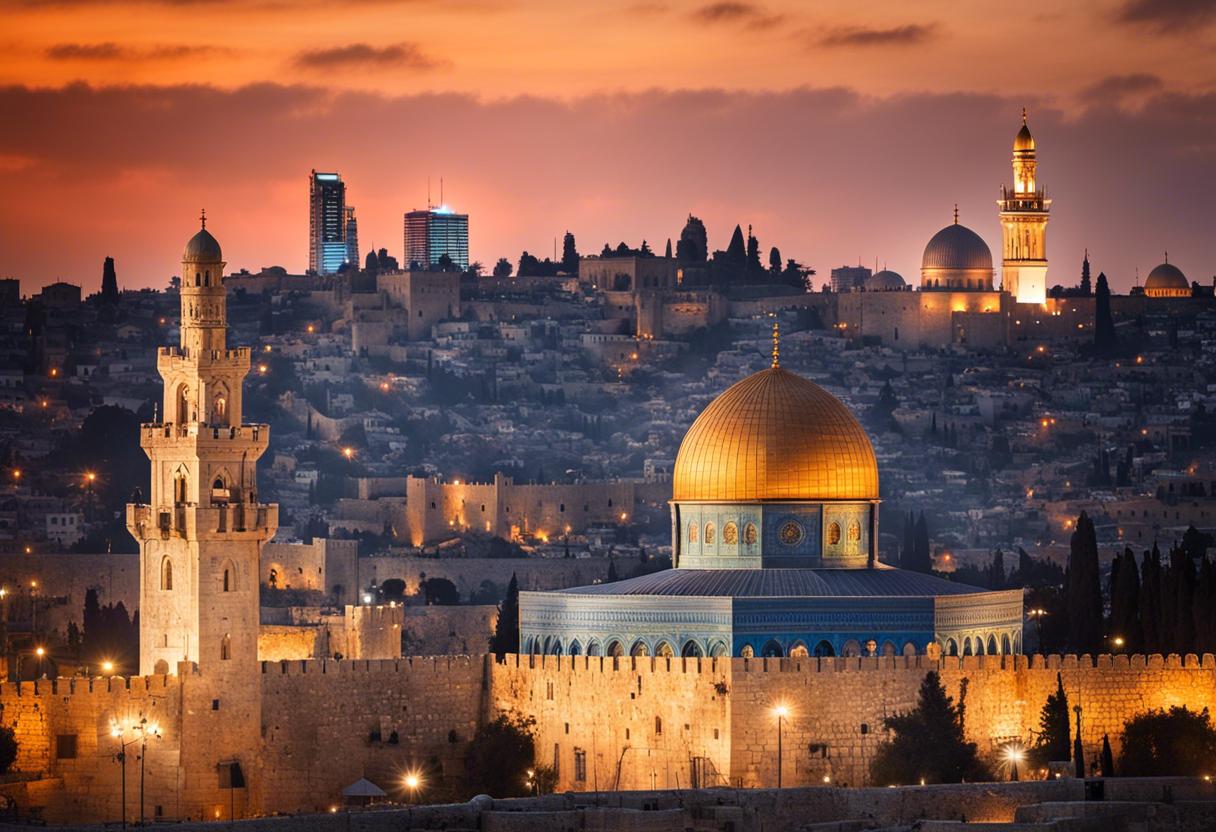Bethlehem is currently desolate, being largely reliant on the influx of tourists or more succinctly, pilgrims who visit the historical birthplace of Jesus. However, since the 7th of October, international travellers haven’t been keen on venturing into the West Bank due to perceived risks.
Looking at tourism in Bethlehem, we find that it typically mirrors the seismic shifts in Israel-Palestinian affairs. Visitor numbers surged following the Oslo I Accords ratified in 1993, dipped dramatically post the collapse of peace talks in 2000 and the second Intifada, and then slowly started improving, only to be severely impacted by the unforeseen onset of the Covid-19 pandemic.
In better times, Bethlehem was frequented by one to two million visitors annually, especially during the Christmas period. In the previous year, all celebratory events were cancelled with only religious functions being held, both as a rational approach to dwindling visitor numbers and an act of solidarity following the attacks on Gaza. Today, the Manger Square stands silent and deserted. Businesses and accommodation establishments remain shut with an overwhelming sense of despair pervading the area.
Life in Bethlehem wasn’t rosy even prior to October 7th for either Muslims or the Christian population. Over time, the Christian population shrank from over 80 per cent in the 1950s to a mere 12% in 2016.
Bethlehem is separated from Jerusalem by a mere ten miles but residents must obtain Israeli permits for access, irrespective of family ties. While Jerusalem is alive with activity, Christian pilgrims are conspicuously missing, Jewish visitors from globally, however, are visible, appearing in a show of support.
On the books, Israel promotes full religious freedom but the lived experience differs significantly, particularly noticeable with those clad in Christian religious attire in Jerusalem. Various forms of hostility, including incidents of spitting, physical aggression, and defacing of churches, have been reported with an increasing frequency in current times.
Michael Kelly, a journalist and newly installed director of the Irish wing of Aid to the Church in Need, has personally witnessed such spitting incidents. This past week, far-right nationalist enthusiasts and religious radicals marching through the Old Muslim Quarter seemingly targeted not only Muslims but also Christians.
Ultrahardline Jewish groups have been galvanised by ultranationalist personas in Binyamin Netanyahu’s government, such as Itamar Ben-Gvir, who oversees the internal security ministry – which falls under the jurisdiction of the police service. He joined the marchers, emphatically stating that “Jerusalem is ours”.
The plight of Christians in Gaza is noticeably grimmer. A church known as the Catholic Holy Family is housing approximately 550 Christians living under distressing circumstances. The group includes 140 youngsters, with nearly 54 having disabilities and are under the care of Mother Teresa’s Missionaries of Charity.
In the previous year, Nahida and Samar Anton, a mother-daughter duo, were unfortunately shot dead in the Holy Family premises by the Israeli Defence Force snipers, leaving 7 people wounded. In a report shared in May, following his visitation, Cardinal Pierbattista Pizzaballa, the Latin Patriarch of Jerusalem, disclosed that 36 individuals from the community had perished due to injuries from snipers, bombings, or inadequate medical attention for injuries or pre-existing conditions.
Approximately 140 Christian families, alongside Muslims, have taken refuge in the Orthodox Church of St Porphyrius, which was a target of the Israeli bombing last October, resulting in 16 fatalities.
Tensions have always been present among Christians in Israel, with disagreements over the management of holy places being particularly disgraceful. The dilemma of who should have custody of the keys to numerous renowned pilgrim churches is solved by handing them to Muslim families, as the Christian denominations can’t reach a consensus. Interestingly, the crisis-induced need for a shared identity has catalysed greater practical collaboration among Christians.
Nevertheless, a new split has surfaced. The majority, about three-quarters, of Christians in Israel are Arabic speakers. However, there are also approximately 100,000 Catholic migrants and asylum seekers who began relocating to Israel in the 1990s from the Philippines, Kerala, and Sri Lanka, mainly to work as caregivers and cleaners.
Since 2021, these individuals have been taken care of by a vicariate founded by the Vatican for Hebrew-speaking Catholics. Some of them maintain a low profile to avoid attracting their employer’s attention to their Christian identity and secretly convene for liturgies. Many of their offspring have been born in Israel, speak Hebrew, and identify with the Israeli state, causing understandable friction with Arabic-speaking Christians.
While the influx of Hebrew-speaking Christians somewhat supports the numbers in a church wrestling with numerous issues, it doesn’t alter the reality that the world’s oldest Christian communities are under immense pressure.
It is generally assumed that the number of Palestinian Christians residing in Santiago, Chile, surpasses the number that still remain in their native homeland. At least five generations have sought refuge in Chile and in doing so, they have constituted a strong pro-Palestine advocacy group. Despite the uptick in Christian population in Israel, with its current figure at 1.9% of the total populace, the figure had once been as high as 11% at the close of the Ottoman Empire.
Christian residents of Israel tend to be well-educated, with a significant number of women pursuing tertiary education. The multilingual skills of many of them, with up to three or four languages spoken, present them with greater migration prospects, a choice for which they can hardly be faulted.
As Ireland advocates for Palestine, it ought to consider the Christian minority within Israel and Palestine. Although religious affiliation should not dictate who receives aid, it is clear that Christians encounter unique hurdles. Some of the globe’s oldest Christian communities reside in places like Bethlehem and Gaza. Their churches risk becoming unused monuments, standing symbolic of Western indifference, a fate that would certainly be sorrowful.

